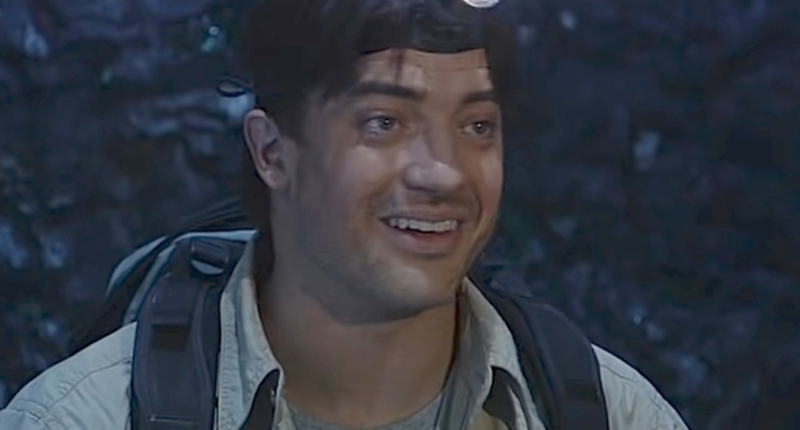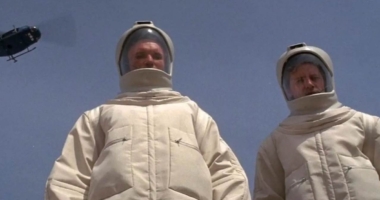“Journey to the Center of the Earth” was a groundbreaking film that advanced 3D film technology and changed the movie-making industry. The film was the first live-action narrative feature film shot in 3D using digital cameras. These advancements in technology also highlighted issues faced by visual effects artists in the industry. VFX company Meteor Studios stopped paying its artists, and VFX supervisor Dave Rand’s team was not paid. After Rand went to the press, Brendan Fraser contacted him to find out what was going on and publicly campaigned for the VFX artists, helping them receive 80% of their money almost two years later. Rand continues to speak out, demanding changes in the film industry.
How Brendan Fraser’s “Journey to the Center of the Earth” Set a 3D Movie Precedent
Lead star Brendan Fraser’s critically acclaimed performances in films like “Gods and Monsters,” “Blast From the Past,” and the successful “The Mummy” franchise proved his leading-man star power, grossing $244 million worldwide. However, his career started to slow down after “The Mummy: Tomb of the Dragon Emperor.” Luckily, Fraser has made a comeback, taking home the Best Actor Oscar on March 12, 2023, for his role in “The Whale.”
Aside from setting box office numbers on fire and winning a long-awaited Oscar, Brendan Fraser also made movie history with “Journey to the Center of the Earth” in 2008. During an interview with Vegas Film Critic while promoting the film, Fraser called it “a cool movie the likes of which an audience has not seen before in history.” He noted that it was “the first live-action, feature-length, narrative-driven, high-definition, preconceived, and delivered 3D film ever made.”
While there have been 3D movies for over a century, the technology used in “Journey to the Center of the Earth” was a cutting-edge immersive experience that achieved a precedent for several reasons. Firstly, the movie was live-action and feature-length, unlike previous 3D films. Secondly, it was narrative-driven, with a fully realized plot, characters, and action, rather than just a collection of gimmicky 3D effects. Thirdly, it was the first high-definition 3D film, which allowed for a much sharper and clearer image than previous 3D films.
Fraser explained that the technology had improved dramatically since the days of the red-and-green glasses utilized in the 1950s, and the modern glasses worked well. He noted that the audience was the star of the movie because the movie was about the experience itself. While the technology behind 3D films has advanced further since 2008, “Journey to the Center of the Earth” remains a significant milestone in the evolution of 3D film technology.
In conclusion, “Journey to the Center of the Earth” not only contributed to Brendan Fraser’s successful career but also set a precedent for 3D movies. The film was the first live-action, feature-length, narrative-driven, high-definition, preconceived, and delivered 3D film ever made, which was a massive achievement in the evolution of 3D film technology.
How “Journey to the Center of the Earth” Advanced 3D Film Technology and Supported Visual Effects Artists
Brendan Fraser’s “Journey to the Center of the Earth” was a groundbreaking film for many reasons. Directed by visual-effects photographer Eric Brevig, who also worked on James Cameron’s “Ghosts of the Abyss,” the movie was the first live-action narrative feature film shot in 3D. This advancement in 3D technology paved the way for future films like “Avatar” and changed the movie-making industry.
The digital cameras used to film “Journey to the Center of the Earth” also allowed for faster and easier movie-making. Visitors to the set could watch the footage in 3D as it was being filmed, which director Eric Brevig believed was the future of moviemaking. However, these advancements also made it easier for producers to take advantage of visual effects artists who do the work.
During the making of the film, Montreal-based VFX company Meteor Studios stopped paying its artists and filed for bankruptcy. VFX supervisor Dave Rand’s team was promised payment of $1.3 million plus overtime, but they were ultimately not paid. Despite going to the press, no one wanted to cover it, and Rand suspected the studio had pressured them to bury the story.
Brendan Fraser stepped in to support the visual effects artists who were not paid for their work. After Rand tweeted about his experience, Fraser contacted him directly to find out what was going on. Fraser publicly campaigned for the VFX artists and helped them receive 80% of their money almost two years later.
Rand continues to speak out not only in praise of Fraser but also to demand changes in the film industry, which he believes is broken in many ways.
In conclusion, “Journey to the Center of the Earth” was a groundbreaking film that advanced 3D film technology and changed the movie-making industry. However, it also shed light on the issues faced by visual effects artists in the industry. Brendan Fraser’s support of the unpaid VFX artists demonstrates his commitment to the film community and his willingness to advocate for change.
Don’t miss interesting posts on Famousbio










